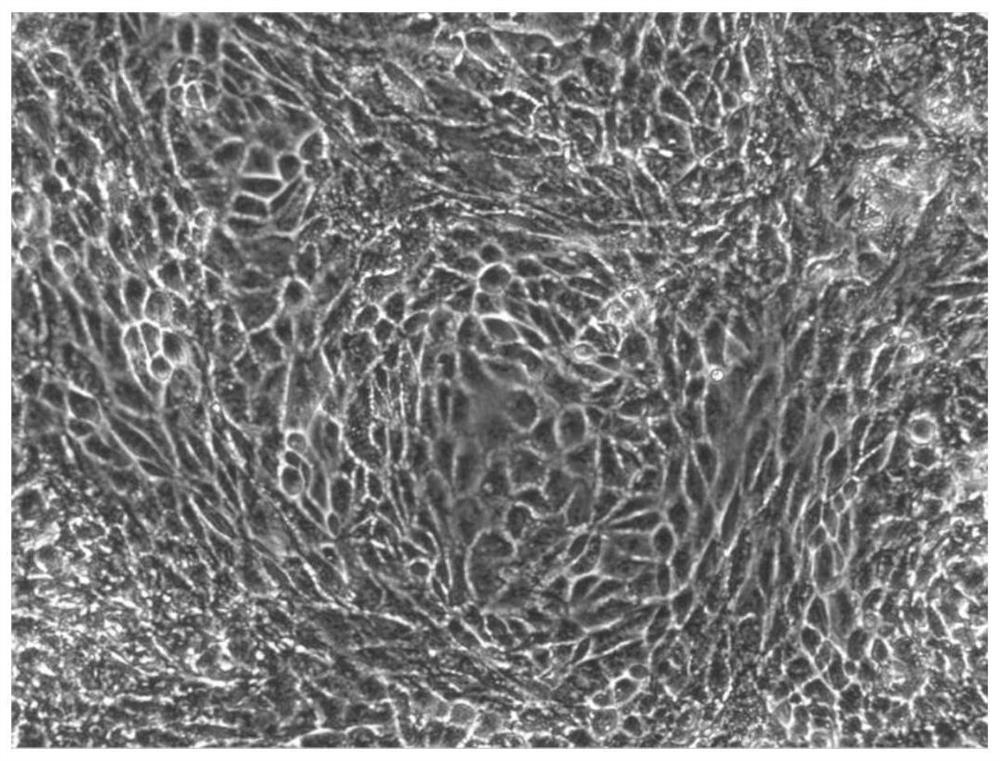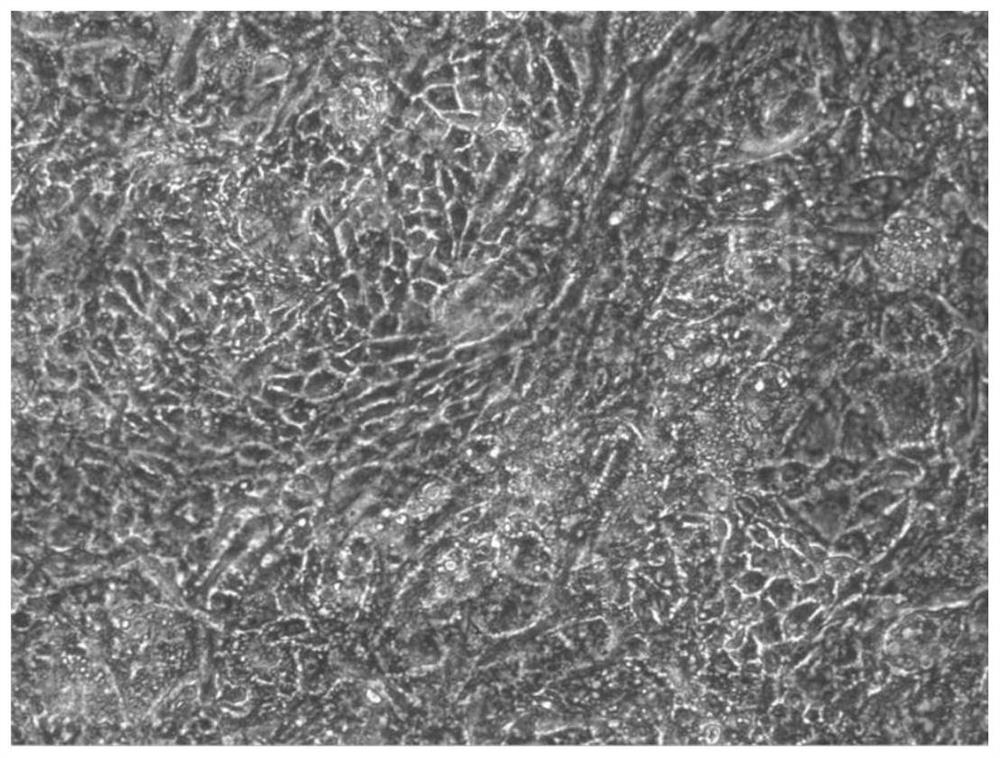Culture medium for inducing human embryonic stem cells to differentiate into liver-like tissue, induction method and application
A technology of human embryonic stem cells and differentiation medium, which is applied in the field of medium for inducing human embryonic stem cells to differentiate into liver-like tissues, and can solve the problem of liver buds not having intrahepatic bile ducts, complicated culture, and inability to further differentiate into tissue organoids, etc. question
- Summary
- Abstract
- Description
- Claims
- Application Information
AI Technical Summary
Problems solved by technology
Method used
Image
Examples
Embodiment 1
[0048] Example 1 Medium for Inducing Directed Differentiation of Human Embryonic Stem Cells into Liver-like Tissues in Vitro
[0049] The culture medium for inducing the directed differentiation of human embryonic stem cells into liver-like tissue, including the following five mediums used in sequence:
[0050] (1) Differentiation medium I, directional endoderm differentiation medium A: based on RPIM1640 medium, 25% MTeSR™1, 100ng / mL Activin A (ActivinA), and 10ng / mL bone morphogenetic protein were added 4 (BMP4), 2% B27 (-insulin);
[0051] (2) Differentiation Medium II, i.e. Directed Endoderm Differentiation Medium B: Based on RPIM1640 medium, 25% MTeSR™1, 100ng / mL Activin A (ActivinA), 2% B27 (-insulin) were added ;
[0052] (3) Differentiation medium III, that is, liver-directed differentiation medium: on the basis of RPIM1640 medium, 25% MTeSR™1, 20ng / mL bone morphogenetic protein-2 (BMP2), 30ng / mL human fibroblast Cell growth factor-4 (FGF4), 2% insulin-free B27 (-ins...
Embodiment 2
[0055] Example 2 Induction of Directed Differentiation of Human Embryonic Stem Cells into Liver-like Tissues in Vitro
[0056] Using the method of the present invention to induce the directed differentiation of human embryonic stem cells (humanembryonicstemcells, hEScells) into liver-like tissues in vitro, the specific process includes the following steps:
[0057] 1. Obtainment of Committed Endoderm Cells
[0058] Day 1-2:
[0059] (1) Human embryonic stem cells were induced 2 to 3 days after H1 passage, and cells with good growth status were selected for differentiation experiments;
[0060] (2) Discard the human embryonic stem cell medium (MTeSR™1), and wash twice with DMEM / F12;
[0061] (3) Replace with differentiation medium I (endoderm induction medium A), at 37°C, 5% CO 2 conditions for two days.
[0062] Day 3-4:
[0063] (4) Discard yesterday's medium, replace with differentiation medium II (endoderm induction medium B), and culture for two days to obtain endoder...
PUM
 Login to View More
Login to View More Abstract
Description
Claims
Application Information
 Login to View More
Login to View More - R&D
- Intellectual Property
- Life Sciences
- Materials
- Tech Scout
- Unparalleled Data Quality
- Higher Quality Content
- 60% Fewer Hallucinations
Browse by: Latest US Patents, China's latest patents, Technical Efficacy Thesaurus, Application Domain, Technology Topic, Popular Technical Reports.
© 2025 PatSnap. All rights reserved.Legal|Privacy policy|Modern Slavery Act Transparency Statement|Sitemap|About US| Contact US: help@patsnap.com



